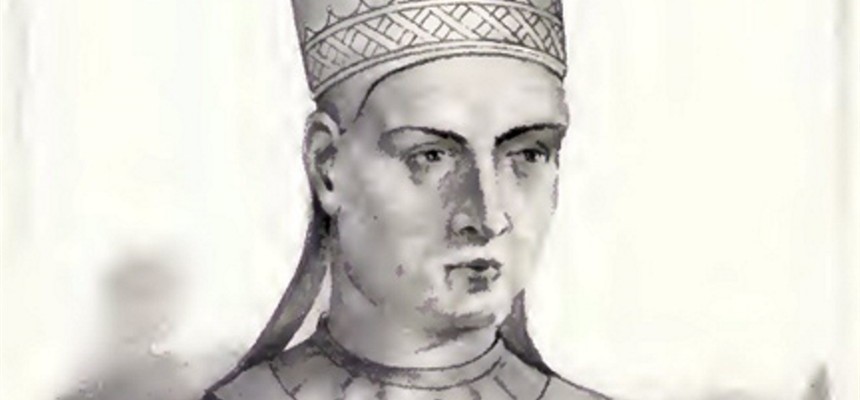
Pope Stephen, as was most common of popes in the Dark Ages, was the son of a wealthy Roman aristocrat whose name was Hadrian. At an early age, the child was seen to be very intelligent. To further his potential, as a young man, he was educated by a relative, Bishop Zachary, who was also librarian of the Holy See. Stephen spent his life serving the Church. He was raised to the cardinalate by Pope Marinus I (882-884) and became the titular head of San Quatro Coronati.
When Pope Adrian died suddenly, in 885, while on his way to attend a conference sponsored by Emperor Charles (the Fat), Stephen was quickly elected, likely on the basis that his holiness was well known. The Church did not wait for the imperial approval before consecrating Stephen on July 15 of that year. Charles, seeing that his imperial prerogative had been overstepped, dispatched a legate to depose Stephen. The legate soon realized that the unanimity and canonical correctness of the election precluded deposing the new pope.
The current status of Rome was in a deplorable state. A famine in the Italian peninsula, caused by a drought and locusts, was causing starvation. Stephen turned to the Vatican treasury, only to find it empty. So, he took his inheritance and bought food for the people and help for the poor. He used the same source of money, later, to redeem captives from the Saracens and repair the churches.
Photius, the sometime Patriarch of Constantinople, continued his attacks on the papacy. Stephen got the new Byzantine emperor, Leo VI to send Photius into exile. He then got his new friend to send soldiers and warships to stave off the continued Saracen attacks on southern Italy and the Papal States. The Byzantine army held the area for a year. In 887/888, Pope Stephen wrote that the Christian slaves of Muslims, who had been mutilated, could still become priests. He also proclaimed that they would be excused from killing others during their captivity. This gave the captives a fighting chance of trying to stay alive.
Emperor Charles the Fat was deposed in November 887 by King Arnulf, who ruled Carinthia (the Alps of Austria) and Bavaria. Arnulf had supported the ruler of Pannonia (parts of Hungary, Bosnia, Serbia and other Slavic areas) when there was an uprising, causing friction between himself and other Carolingian rulers. When the Hungarian tribes began attacking Italy, Pope Stephen asked Arnulf for help, to no avail.
When St. Methodius (evangelizers to the Slavs) died in 889, the German clergy were up in arms about the Slavonic liturgy remaining in place (the Mass in the vernacular was a newer concept). To keep the peace, Stephen forbade the Mass. Within a short time, those Catholics of the Slavic nations moved their loyalties to the Patriarch of Constantinople.
Guy of Spoleto, with designs on Lombardy, grew close to Pope Stephen, who referred to him as “his only son”. Stephen was busy with politics, due to his fear of Arnulf, perhaps, and crowned Guy King of Italy in 888 despite Berengar, Guy’s opposition, having been crowned the year before. Stephen crowned Guy Emperor of the Holy Roman Empire in 891.
The young king of England, Alfred, had begun to show his leadership skills. In 886, he recaptured the village of Lundunburgh from the Vikings, making the English island safer. That village became London. After this, more English pilgrims came to Rome, with their donations, building up the Vatican treasury again.
Pope Stephen V died 14 September, 891 and was buried in the portico of old St. Peter’s Basilica.

Recent Comments